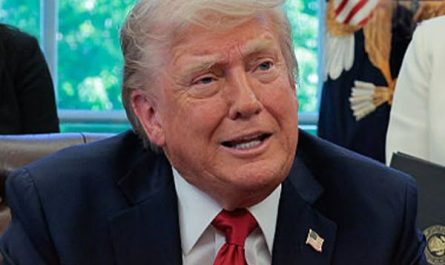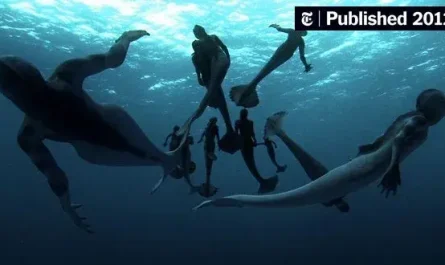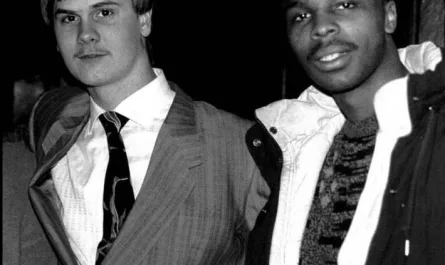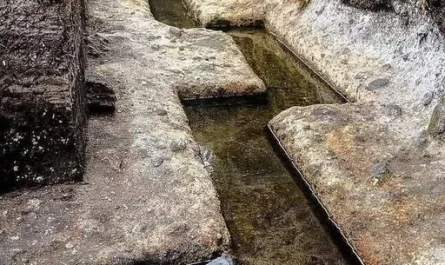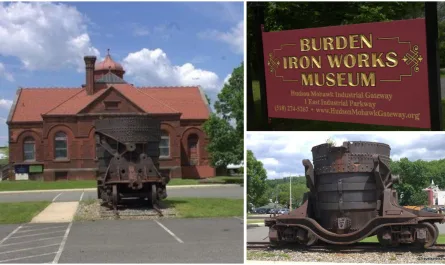In the neon-lit chaos of Las Vegas, where dreams are manufactured and illusions thrive, one woman’s reality shattered in the most unimaginable way. What began as a routine visit to an educational exhibit turned into a nightmare that has gripped the nation—a mother, Kim Bales Erick Smith, recognized her long-lost son, Christopher Todd Erick, not in a quiet cemetery or a family plot, but posed like a statue in a public display of plastinated human remains. This isn’t the plot of a horror thriller; it’s a true story unfolding right now, raising profound questions about consent, dignity, and the shadowy underbelly of the human body exhibition industry. As of today, Kim’s fight to bring her son home rages on, fueled by grief, determination, and a growing wave of public outrage.

The Boy Who Lit Up Rooms: Christopher’s Early Years
To understand the depth of this tragedy, we have to start at the beginning—with a vibrant, athletic kid from the heart of Texas. Christopher Todd Erick was born on September 27, 1989, in Mesquite, a bustling suburb on the outskirts of Dallas. From the moment he entered the world, he was a force of nature. His mother, Kim, describes him as a “ray of sunshine”—full of energy, faith, and an infectious zest for life that drew people in like moths to a flame.
Growing up in Midlothian, Texas, Christopher was the quintessential all-American boy. He laced up his cleats for the Midlothian Highlander football team, where he played as a running back wearing number 22 for two unforgettable seasons. Off the field, he dominated the baseball diamond and channeled his competitive spirit into mixed martial arts (MMA), even clinching a spot in the top 10 of the King of the Ring tournament and earning a place in the Hall of Fame for City Champs. Friends remember him as the guy who could light up a room with his laugh, always quick with a joke or a helping hand. “He had no intention of giving up on life,” Kim told reporters in a recent interview, her voice cracking with the weight of 13 lost years. “Chris was full of dreams—he wanted to coach kids, build a family, make a mark.”
But beneath the highlights, family dynamics simmered. Christopher’s parents, Kim and Steven Todd Erick, divorced when he was young, leaving scars that would deepen over time. As a teenager, Chris grappled with the pressures of adolescence, including what Kim describes as undiagnosed mental health struggles and the fallout from a turbulent home life. He bounced between homes, eventually landing in Oklahoma and Texas, chasing stability in a world that felt increasingly unsteady. By his early 20s, he was navigating adulthood with the same grit that had carried him through sports—but life had other plans.
A Shadowy End: The Mysterious Death in 2012
On November 10, 2012, Christopher’s light flickered out forever. At just 23 years old, he was found dead in his Midlothian apartment under circumstances that have haunted his family ever since. The official autopsy report listed the cause as “undetermined with cyanide toxicity,” a chilling detail that initially pointed to a natural death or possible suicide. But Kim never bought it. “Cyanide? In his blood? My son wasn’t suicidal—he was fighting for his future,” she insists.
What followed was a cascade of unanswered questions. The medical examiner flipped the ruling from natural causes to undetermined after discovering the poison, urging Midlothian police to investigate further. But the cops demurred, closing the case as a suicide without probing the critical last 48 hours of Chris’s life. No toxicology deep-dive. No witness interviews. Just a file stamped and shelved.
Kim, undeterred, launched her own investigation. She uncovered disturbing threads: financial ties between Chris’s father, Steven, and a human tissue harvesting company; his stepmother, Tanya Pevsner Erick’s brief stint as a financial advisor in the same murky industry; whispers of family conflicts escalating to something far darker, including allegations of torture and evidence tampering. To Kim, the cyanide wasn’t an accident or a cry for help—it was evidence of foul play, possibly orchestrated by those closest to him. The family stepped in where law enforcement wouldn’t, but leads dried up. Chris’s body was reportedly cremated, and “cremains” were returned to the family. Or so they thought. Kim held a memorial, scattering what she believed were her son’s ashes near Searchlight, Nevada—a poignant ritual for a boy she’d lost too soon.
For over a decade, Kim lived in the fog of grief, haunted by “what ifs.” She advocated for better mental health resources, shared Chris’s story in quiet moments, and kept his memory alive through photos and stories. Little did she know, her son wasn’t at rest—he was on display.
The Exhibit That Changed Everything: A Las Vegas Horror Story
Fast-forward to early 2025. The “Real Bodies: The Exhibition” (also known as “Bodies…The Exhibition”) was packing crowds at Bally’s and Luxor Hotels in Las Vegas. This traveling spectacle, experienced by over 15 million people worldwide, promises a “detailed, three-dimensional vision of the human form rarely seen outside of an anatomy lab.” Using plastination—a process pioneered by Gunther von Hagens that replaces bodily fluids with polymers to preserve tissues in lifelike poses—the exhibit features full-body specimens and dissected organs, all sourced from “legally donated” remains, often from unclaimed bodies in regions like China or through international anatomical federations.
Kim, visiting Vegas for reasons lost to the blur of routine, decided on a whim to check it out. Educational, right? A way to reflect on the fragility of life. As she wandered the dimly lit halls, her eyes scanned the figures: a runner mid-stride, a thinker in contemplation, bodies flayed open to reveal the miracles within. Then, she stopped dead.
There, in Display Case 27—labeled simply as “The Thinker”—was a plastinated form that mirrored her son in excruciating detail. The build: tall, athletic, broad-shouldered from years of football. The tattoos: intricate designs snaking across the arms and torso, ones Kim had traced with her fingers during bedtime stories. Scars from childhood scrapes and MMA bouts. Even the posture, frozen in a pose of quiet reflection, echoed Chris’s thoughtful demeanor. “It was him,” Kim later recounted, her words trembling in viral interviews. “My boy’s face, staring back at me from behind glass, like some science project.”
Horror gave way to fury. Kim confronted exhibit staff, demanding answers. They confirmed the body’s provenance: an unclaimed male cadaver from Clark County, Nevada (though Chris died in Texas—another red flag), donated to the International Federation of Associations of Anatomists, then plastinated and shipped for display. No family notification. No consent forms. Just a bureaucratic pipeline turning the indigent and unidentified into exhibits for $30 a ticket.
Word spread like wildfire. By April 2025, the last confirmed sighting of “The Thinker” was still at the Luxor venue. Kim’s Facebook post exploded: “They vanished him. The cremains? A lie. My son was sold—skinned, gutted, and put on show.” YouTube documentaries racked up millions of views, podcasts dissected the case (shoutout to Strange Sisters for their gripping March 2025 episode), and a Change.org petition demanding DNA testing surged past 50,000 signatures.
The Battle for Justice: From Denial to Courtrooms
Kim’s quest for repatriation has been a David-vs.-Goliath saga. She sued the exhibition organizers, the plastination company, and county officials in Nevada courts, alleging mishandling of remains, lack of consent, and ethical violations. “No one asked if I wanted my son donated to science,” she stated in court filings. “They stole his dignity.” The defendants countered with claims of “legal donation channels,” but refused immediate DNA testing—a move that reeks of evasion to Kim and her supporters.
As of November 12, 2025, the case is grinding through Nevada’s legal system, with hearings scheduled into early 2026. The exhibit itself runs through March 2026 at Luxor, drawing protesters outside who chant, “Bodies have names—give them back!” Kim’s GoFundMe for legal fees has raised over $100,000, but the emotional toll is immeasurable. “Every night, I see him there—posed, exposed, profited from,” she shared in a TikTok video that’s amassed 10 million views. “I just want to bury him properly, with love.”
This story has ignited a firestorm. Lawmakers in Texas and Nevada are pushing for reforms: mandatory family notifications for unclaimed bodies, transparency in plastination sourcing, and bans on commercial exhibits using potentially unidentified remains. “How many other families are out there, searching for sons and daughters who ended up as attractions?” one congresswoman asked in a recent hearing.
A Legacy Beyond the Glass: Why This Matters
Christopher Todd Erick wasn’t just a body in a case—he was a son, a brother, a dreamer whose life was cut short amid suspicions that demand real answers. His mother’s fight isn’t just for closure; it’s a clarion call against an industry that commodifies the dead, often from marginalized communities whose voices go unheard.
As the Luxor lights flicker on another sold-out night, Kim stands resolute. “Chris taught me resilience,” she says. “I’ll bring him home, no matter what.” If this tale stirs something in you—outrage, empathy, a call to action—sign the petition, share his story, demand change. Because every body deserves dignity, and every mother deserves her peace.
What do you think? Has this exhibit crossed an ethical line? Drop your thoughts in the comments below. For updates, follow #BringChrisHome.
Sources: Compiled from public records, interviews, and ongoing coverage. This post aims to honor Christopher’s memory while amplifying Kim’s voice.
